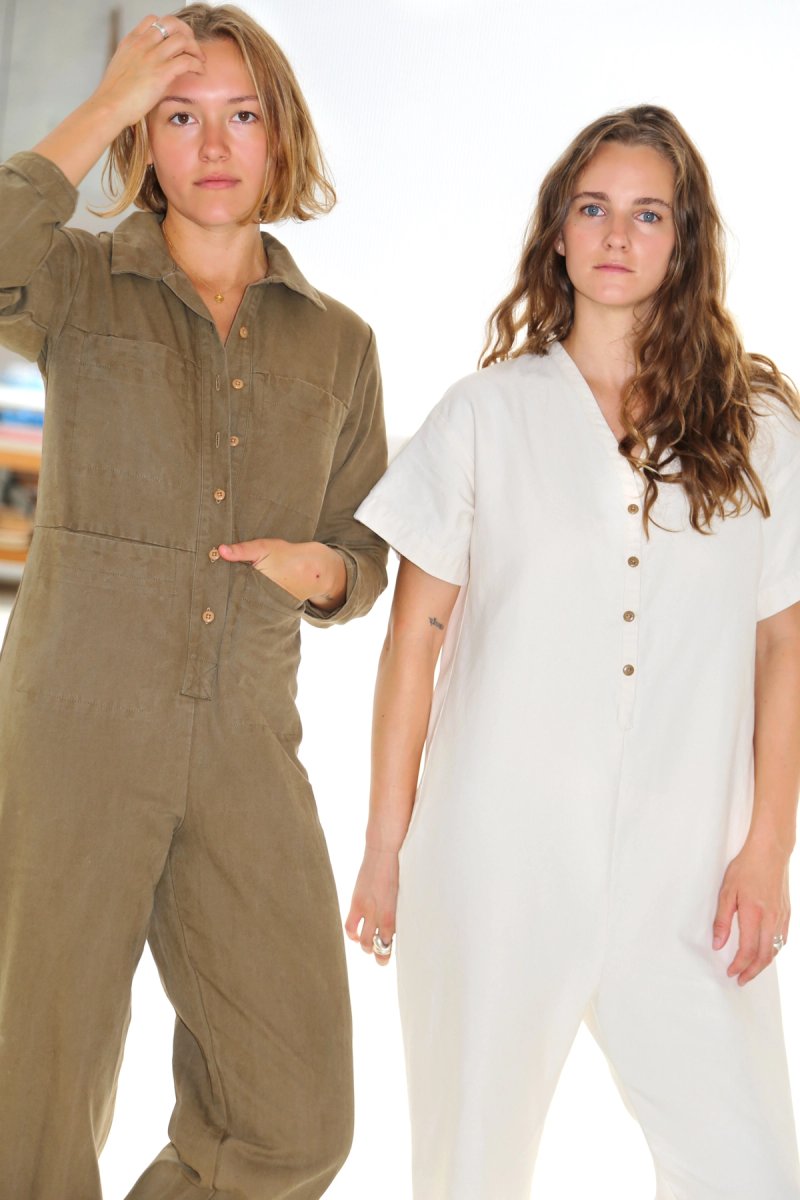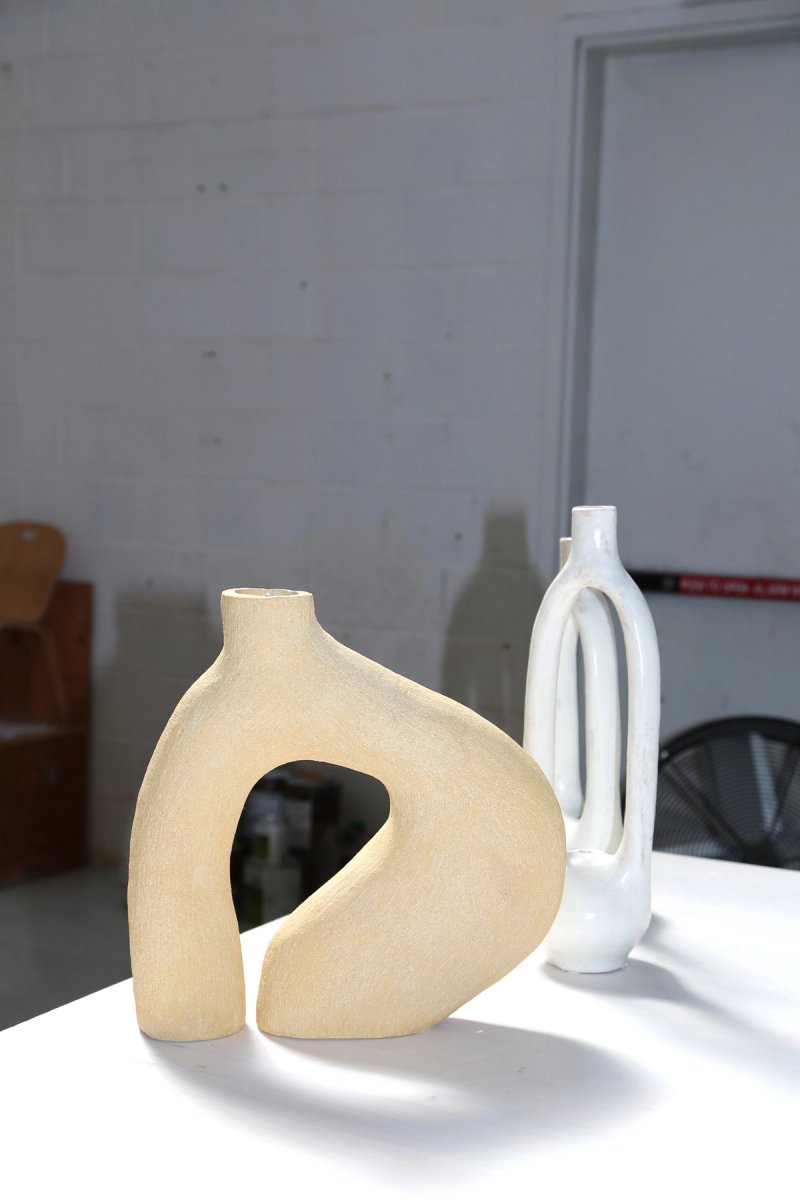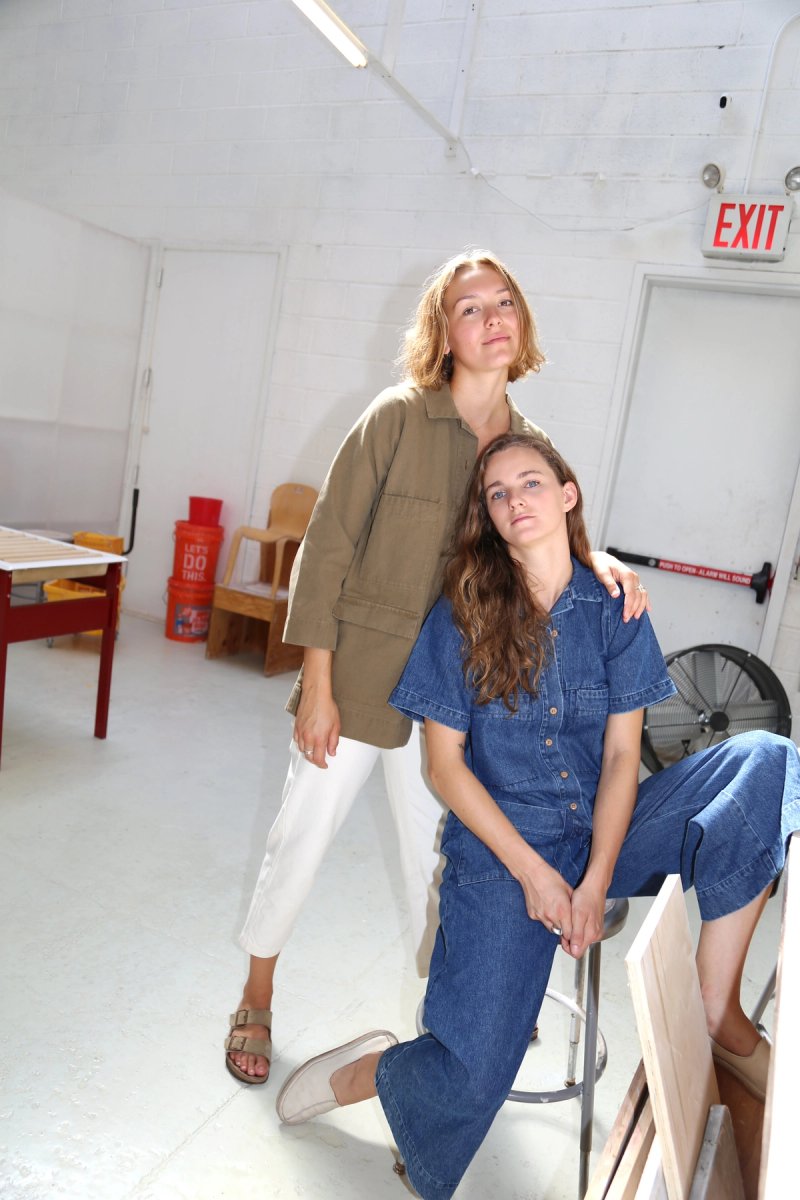Tell us a little bit about your work/process!
SBT: My conceptualization and building process usually starts with a form catching my eye — though I rarely get attached to an entire form. More often it’s not a singular form but a collection of parts: a chunky foot, a certain curve of a belly, an angle of a lip, a funky arm. Then these parts that separately intrigue me get combined into one piece that draws from multiple original forms, leaving room to fill in the gaps with unintentional and unexpected connecting bridges and walls. Occasionally I set out to copy an original form in order to learn it’s curves and bulges, and in the building process, it inevitably alters itself from what I set out to copy. A notable example of this is the Peruvian Stirrup Vessel, that was taken quite literally from an original form that held me and moved me. I had never seen anything like it before and set out to re-create it. Mine is much different in function and form than the first piece that caught my eye in the Americas section of the Permanent Collection at the Met, but there is something valuable to be learned from making a copy.
After spending the last 10 months developing what I feel to be my personal Permanent Collection (though I’m sure this will evolve over time, retiring some forms that don’t speak to me anymore and adding in new discoveries), I am working to streamline and expand my production, move into a space that is more my own, and hire a studio assistant to help me take on the quantity and scale of projects I am currently having to turn down because I am at my personal capacity and have no interest in being a human factory. Once I get a good groove going with that support system on production, I intend to focus more fully on sculptural endeavors, the first of which I am showing for the first time in New York next week (Thursday, September 20th). It’s all very exciting and surreal, and I am endlessly grateful for all the support from this community that has buoyed me up in this last year as I’ve fully committed myself to this work which has been the most terrifying and gratifying endeavor I’ve undertaken yet.
KT: I’m beginning to realize I treat my body of work and style with unusual care. I’ve become quite fond of the idea of someone reaching an impasse when attempting to define my work, straining to label it with any tangible word. I think that comes from my background as a student of poetics — having graduated with a BA in Poetry — where you’re essentially studying the subtleties within how form informs language and how language informs the world. I find joy in challenging people who feel certain about their perspective. I’ve been told I evoke a particular palette — what I mean to say is, no matter how disparate the things I wear or surround myself with are, they always seem to fit within an essence of myself. So I think that’s been extending into my work, and I’m really happy with that; with the idea of how works with different clay bodies, different purposes, sizes, eras of inspiration, can fit under an umbrella that’s simply and clearly understood as work I’ve made. Right now I’m really interested in making lamps and building these fat, bulbous sculptures that appear without form beyond they’re simple spherical shape, but say, as you spin the piece, the shape transforms completely, creating new silhouettes.
I’ve always described my process of physically making work as quite brutal. I’m really working with the clay, in a way trying to understand what it wants to do and letting the clay shape itself. I’m terrible at sketching, and usually go into a new piece with just a mental picture of what I want, and try to see what happens along the way. An experiment in improvisational sculpture, perhaps?
My process begins and is always interspersed with spending time gathering images of the shapes and forms around me, and those created by other makers. I went to Brimfield this past weekend and noticed myself gravitating toward all the antique tools, the handles or actual apparatus’. I took tons of photos and tinkered with pieces and was getting really excited about all the strange shapes. So I know that when I get back into the studio, I’ll find myself building a piece that’s an accumulation of all those tools I touched.
I like to know what has come before me, to read about how those makers came to their own styles. It’s important for me to have all of it piled up in my mind so that I have knowledge in front of me of what’s behind me as I get to the work table, and from there I can decide how I’ll treat all that history as I begin to build a new form.





